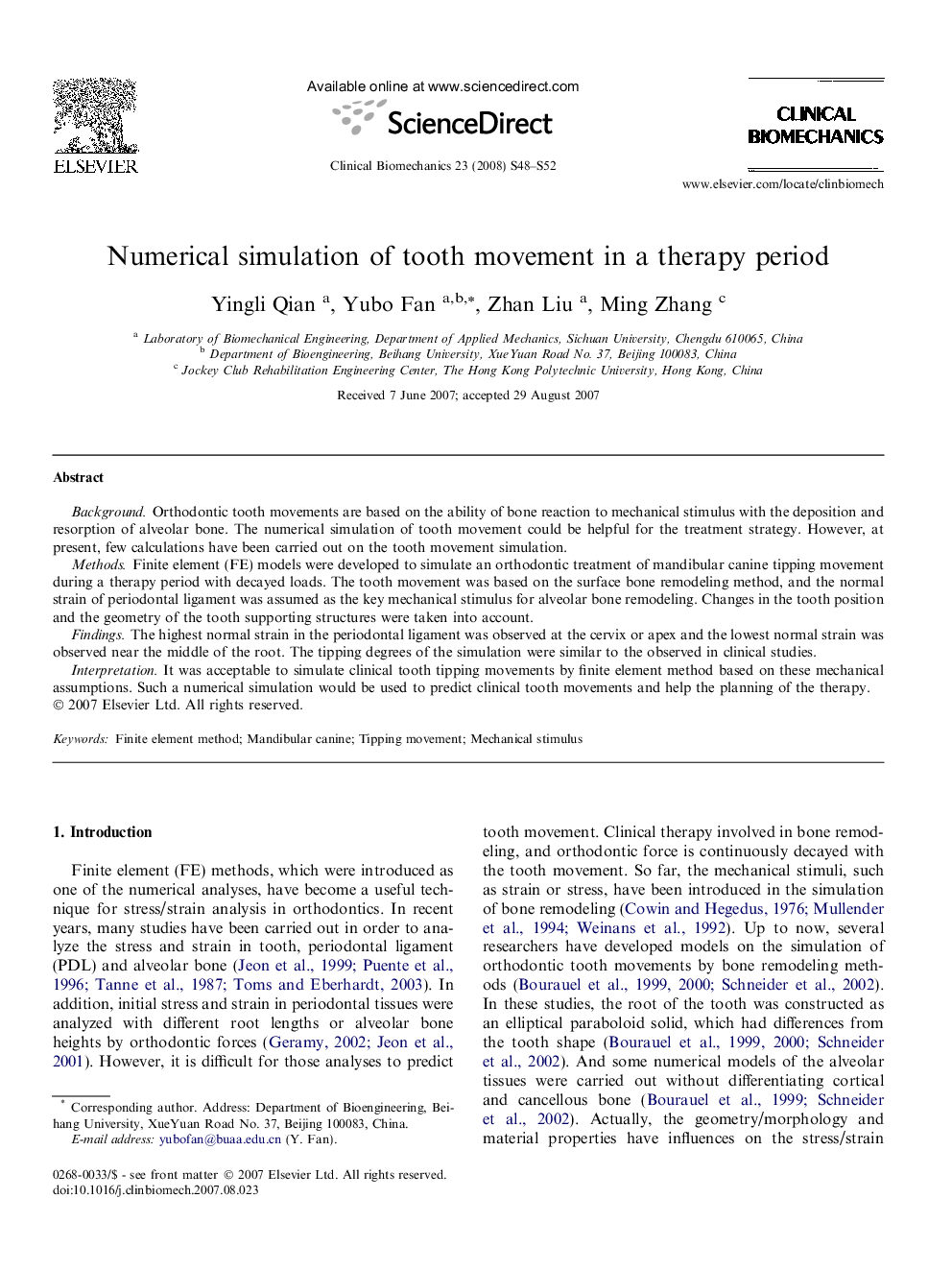| Article ID | Journal | Published Year | Pages | File Type |
|---|---|---|---|---|
| 4051198 | Clinical Biomechanics | 2008 | 5 Pages |
BackgroundOrthodontic tooth movements are based on the ability of bone reaction to mechanical stimulus with the deposition and resorption of alveolar bone. The numerical simulation of tooth movement could be helpful for the treatment strategy. However, at present, few calculations have been carried out on the tooth movement simulation.MethodsFinite element (FE) models were developed to simulate an orthodontic treatment of mandibular canine tipping movement during a therapy period with decayed loads. The tooth movement was based on the surface bone remodeling method, and the normal strain of periodontal ligament was assumed as the key mechanical stimulus for alveolar bone remodeling. Changes in the tooth position and the geometry of the tooth supporting structures were taken into account.FindingsThe highest normal strain in the periodontal ligament was observed at the cervix or apex and the lowest normal strain was observed near the middle of the root. The tipping degrees of the simulation were similar to the observed in clinical studies.InterpretationIt was acceptable to simulate clinical tooth tipping movements by finite element method based on these mechanical assumptions. Such a numerical simulation would be used to predict clinical tooth movements and help the planning of the therapy.
